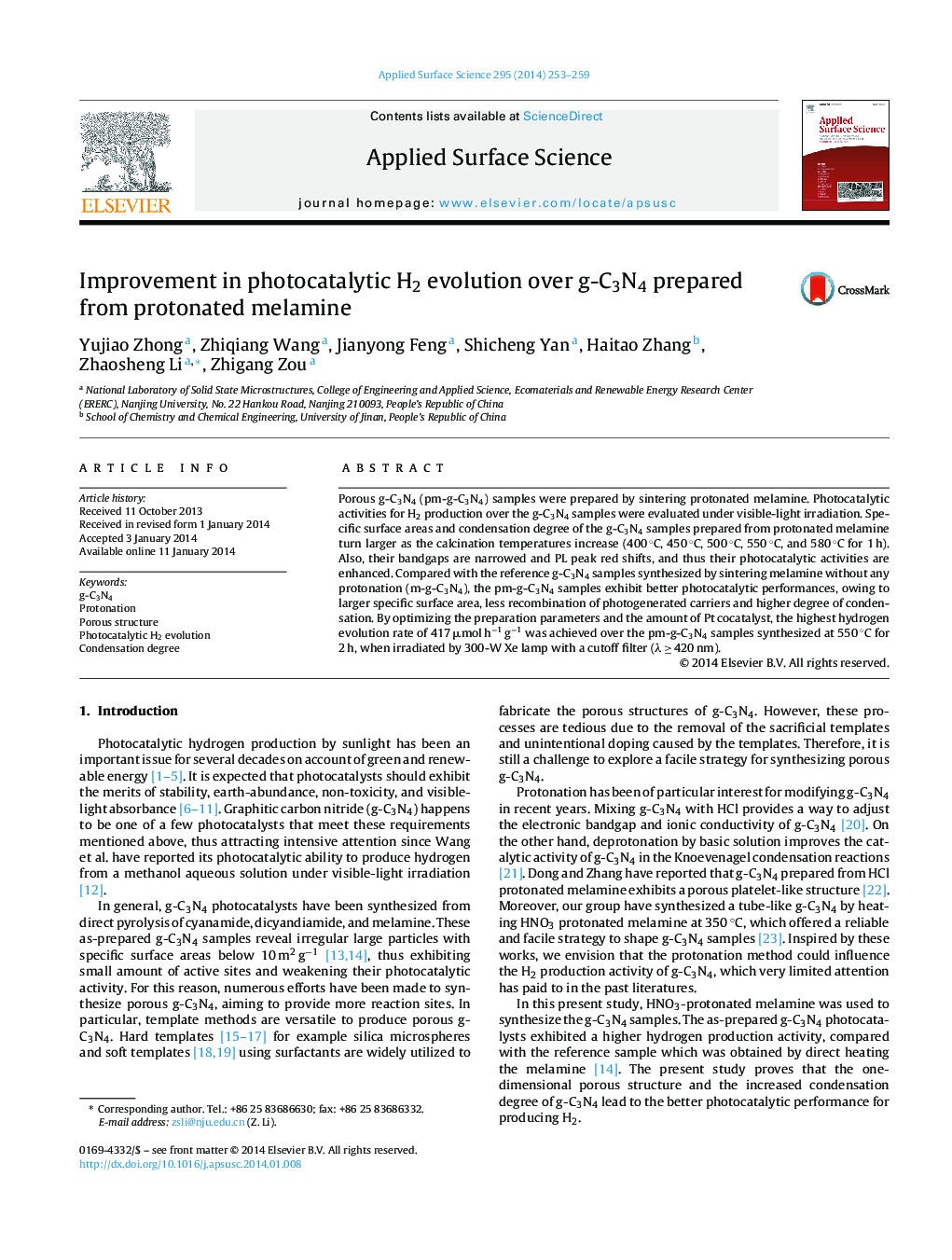| Article ID | Journal | Published Year | Pages | File Type |
|---|---|---|---|---|
| 5358759 | Applied Surface Science | 2014 | 7 Pages |
Abstract
Porous g-C3N4 (pm-g-C3N4) samples were prepared by sintering protonated melamine. Photocatalytic activities for H2 production over the g-C3N4 samples were evaluated under visible-light irradiation. Specific surface areas and condensation degree of the g-C3N4 samples prepared from protonated melamine turn larger as the calcination temperatures increase (400 °C, 450 °C, 500 °C, 550 °C, and 580 °C for 1 h). Also, their bandgaps are narrowed and PL peak red shifts, and thus their photocatalytic activities are enhanced. Compared with the reference g-C3N4 samples synthesized by sintering melamine without any protonation (m-g-C3N4), the pm-g-C3N4 samples exhibit better photocatalytic performances, owing to larger specific surface area, less recombination of photogenerated carriers and higher degree of condensation. By optimizing the preparation parameters and the amount of Pt cocatalyst, the highest hydrogen evolution rate of 417 μmol hâ1 gâ1 was achieved over the pm-g-C3N4 samples synthesized at 550 °C for 2 h, when irradiated by 300-W Xe lamp with a cutoff filter (λ â¥Â 420 nm).
Related Topics
Physical Sciences and Engineering
Chemistry
Physical and Theoretical Chemistry
Authors
Yujiao Zhong, Zhiqiang Wang, Jianyong Feng, Shicheng Yan, Haitao Zhang, Zhaosheng Li, Zhigang Zou,
